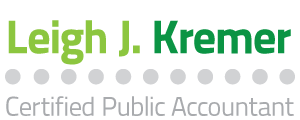Here is the latest information for business owners regarding PPP loan forgiveness and federal payroll tax credits:
Paycheck Protection Program Loan Forgiveness:
- The first thing you need to understand is that the law was written, passed and implemented with great haste. The rules as they apply to forgiveness are being established “on-the fly” and are subject to change on a daily basis. Stay informed of the latest developments as best you can. I am always available to help.
- The amount that can be forgiven is an amount equal to the sum of payments of payroll costs, interest on covered business mortgage obligations, business rent, and any covered utility payments, during the eight-week period beginning on the loan origination date. This is curious because the loan proceeds were calculated assuming a coverage period of 2.5 months (roughly 76 days) and the pay-out period of the proceeds is based on 8 weeks (56 days). So if your only covered expense is payroll, you may run short unless you accelerate or increase your payroll costs.
- For self-employed people, particularly Schedule C filers (sole proprietors and most single-member LLC’s), the forgiveness rules are less forgiving. The amounts you paid yourself for replacement of your share of profits shown on your 2019 Schedule C are only roughly 74% forgivable. So if you received $11,375 loan proceeds you can only get about $8,400 forgiven, even if you paid yourself the entire $11,375 within the eight-week time period. The balance would have to be repaid. However expenditures for other covered expenses (business mortgage interest, business rent, utilities) could be used to reduce the required repayment amount. Sound confusing? It is. Contact me for guidance specific to your situation.
- Expenses paid using the Paycheck Protection Program loan proceeds that are forgiven are not tax deductible. However the loan proceeds themselves are not considered income. This makes sense in that you do not get a deduction for expenses that, in essence, were paid for you by the government.
- Since the forgiveness is contingent upon rehiring any employees laid off before you received the loan, what do you do if the employees do not want to return to work because they are happy receiving unemployment? If this occurs, notify all former employees in writing that their jobs are available and that they need to return to work immediately. I recommend you use certified mail with proof of delivery. For those that do not return:
- Document the average weekly wages they would have been paid had they come back to work.
- Notify your state unemployment office in writing of the situation, documenting the employee’s full legal names, social security numbers, the date they were offered their jobs back, and the amount of compensation offered.
- Failure to return to work will be seen as a violation of unemployment rules and disqualify the employee from receiving further unemployment compensation. They will also be asked to return any unemployment compensation received that covers any periods during which they chose not to work.
- The loan forgiveness application is available at: https://www.sba.gov/sites/default/files/2020-05/3245-0407%20SBA%20Form%203508%20PPP%20Forgiveness%20Application.pdf
- The loan forgiveness application is rather long (11 pages) and confusing. Contact your loan officer for help as there is some information requested that can only be obtained from the bank. As always, I am also available to help.
Employee Retention Tax Credit:
This is a federal payroll tax credit available to business that are hurt by the coronavirus but continue to keep employees on payroll. Note that employers who received a Paycheck Protection Loan are NOT ELIGIBLE.
- To be eligible, employers must be able to prove they suffered economic hardship by closing up shop, reducing hours because of a governmental order, or being able to document a decline in gross receipts by over 50%. Again, employers who received a PPP loan are not eligible.
- The maximum credit is 50% of qualified wages paid per employee with a maximum credit amount of $5,000 per employee. Qualified wages are wages paid between March 13, 2020 and December 31, 2020.
- The credit is used to offset the employers 6.2% share of the Social Security taxes, with the excess refundable. The credit can be claimed on form 941 beginning with the second quarter 2020 filing due July 31, 2020. Employers can realize the tax break more quickly by reducing employment tax deposits being paid now, however caution is urged. If you claim too large a credit you will be liable for penalties and interest on the shortfall.
- For advance payment of tax credits in excess of payroll tax deposits, employers can file the new IRS form 7200. Check the IRS website, www.IRS.gov, for the forms, guidance and a FAQ list.
As most of you are aware, I do not handle payroll anymore these days. However I am available to provide guidance where I can. Contact your payroll service provider as well.
As always, stay safe and be well and contact me if you have any questions via my cell phone (732) 822-6890 or email at LeighKremer@verizon.net.
I help clients reduce taxes, increase profitability, meet reporting requirements and save valuable time. Contact me to find out how!


